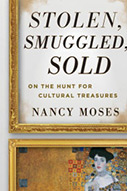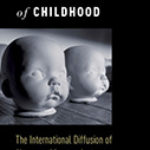Stolen, Smuggled, Sold

Author: Nancy Moses
Publisher: Lanham, MD: Rowman & Littlefield, 2015. 160p.
Reviewer: Marc Balcells | March 2016
Nancy Moses, out of her love for museums, decided to write about the topic of cultural heritage crimes in its various forms. As she herself acknowledges in the preface of the book, she did so after completing a chapter on a previous work on restitutions of illicitly seized paintings during WWII that previously had been on display in museums. As such, the curiosity of the author grew and she decided to start, years later, a new book on the topic. Its structure covers many cases (one per chapter) and in consequence, allows the reader to form his or her opinion on the topic departing from some iconic and some obscure cases, as curated by the author herself. At the end of the chapter (a model used in all of them) the author reflects in the ‘lessons learned’ from the case and poses questions to the reader.
After a preface where the inception of the book is narrated and the author sets the goals of the book, the first chapter deals with the story of Gustav Klimt’s painting of Adele Bloch-Bauer. We can see here a missed opportunity due to the fact that this case is probably the most well-known one when dealing with plundered art during WWII (is there anyone left not knowing about this case after all the media attention that has been drawn to it?). In any case, the author justifies the selection by trying to answer the question of why there are so few art treasures given back to their heirs after WWII. Still, another case could have been used.
Chapter two deals with a more original case: a manuscript belonging to Nobel Prize winner Pearl Buck. This is not the place to reveal who did it, but at least the ethical questions posed by the author and the answers she gives are, once again, more original than the precedent chapter. Chapter three depicts yet another quite original story, as it reveals how a Ghost Dance shirt traveled from a massacre site in South Dakota to a museum in Glasgow (the Kelvingrove), and then back to the United States, and discusses all the agents implicated in the case. It also highlights the importance of some pieces to certain communities, and the ethical work of some museums when they return sacred pieces to their rightful owners.
Chapter four deals with insider theft by illustrating the case of Leslie Waffen, retired head of the Motion Picture, Sound and Video branch of the National Archives, who took no less than 955 records. The chapter is the story of the investigation of the case, and deals with the motives of Mr. Waffen. Chapter five deals with archaeological looting, using as an example a mummy from Egypt. The author takes the opportunity to interview Zahi Hawass for the chapter, and probably because of the nuances of the illicit trade of cultural heritage, becomes one of the most vivid chapters of them all. Chapter six takes us back to the United States with the theft of the copy of the Bill of Rights owned by the state of North Carolina and, once again, the investigation that led to its recovery. Chapter seven goes back to antiquities looting with the trafficking and later return of a Sumerian vessel: once again, readers new to this field will find here some explanations to the complicated phenomenon of archaeological looting and antiquities trafficking. A final chapter in the book, serving as corollary, deals mostly with collecting ethics and is explained in a very straightforward manner in order to allow the reader to form an opinion in the subject. Finally, the book provides the reader with a list of additional readings that refer more to the art per serather than the topic of cultural heritage crime.
Let’s assume there is still someone with no knowledge in the field of stolen/plundered/trafficked art, the problems caused by these actions, and their (possible) returns to their home countries: if that were the case, this book is meant for them. I am referring to people who want to have a primer (or come back to the subject, at a very introductory level) concerning the abovementioned topics and who want to know about it in an easy, concise way. This is not the book to learn about the nuances of international legislation (although some treaties are addressed), nor traffic routes of looted antiquities. This is not an academic book either: it is an informative, detailed and entertaining book for absolutely anyone who likes the field of cultural heritage crimes or wants to learn more about it.
Marc Balcells, professor, Universitat Oberta de Catalunya


